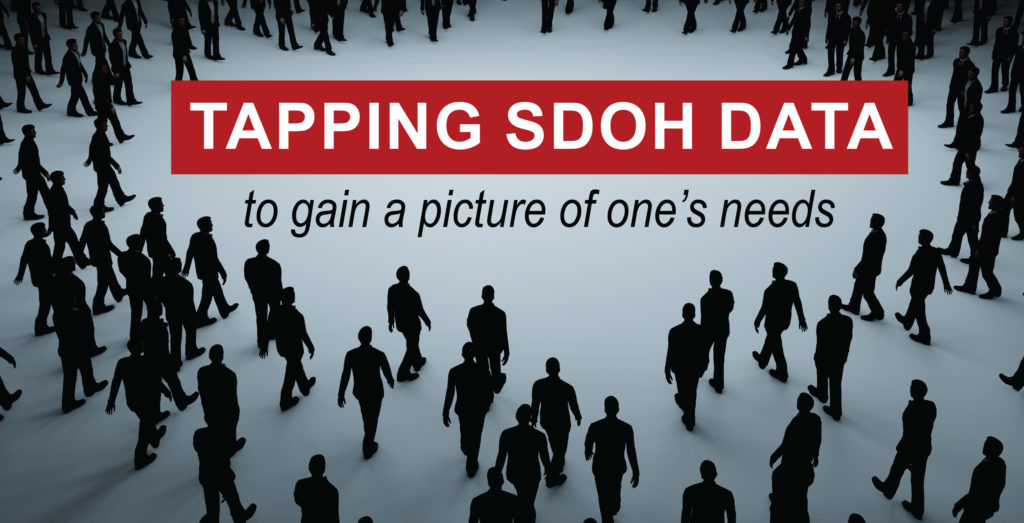
The DFW Hospital Council posts guest blogs by Associate Members. The following was provided by NextGate.

By Andy Aroditis, CEO, NextGate
Access to a complete picture of one’s health is key to enhanced clinical decision-making, coordination of care, patient safety, administrative efficiencies and patient-provider satisfaction. This requires tapping into data outside the four walls of traditional healthcare settings. Because the health of individuals is heavily influenced by socioeconomic and behavioral forces, collating a comprehensive view of one’s needs is critical to achieving value-driven, community-based outcomes.
Referred to as Social Determinates of Health (SDOH), providers can harness meaningful insights into the well-being of their patient populations to deliver high-quality care, while minimizing risk. Social factors are considered to be so impactful because only about 20% of health outcomes are determined by clinical care. The remaining 80% is determined by non-clinical factors, most of which are influenced by geography and socioeconomic conditions. This explains why communities with poor overall health status can actually overshadow a thriving health care system that surrounds it.
As such, healthcare executives are increasingly looking for tools that extend out into non-clinical or traditional settings to assemble a longitudinal view of the patient. Progressive healthcare executives—tired of EHR systems that only provide a limited assessment of one’s needs—are leveraging patient matching technology as a strategic advantage to integrate SDOH data more quickly and efficiency.
Complementing extensive clinical data with SDOH will allow care managers to make more informed decisions and apply data-rich insights into a patient’s treatment plan.
INTEROPERABILITY AND PATIENT MATCHING
Deploying analytics tools to social needs data is showing signs of promise, particularly as organizations seek to reduce the likelihood of readmissions. When screening for social needs is combined with one’s medical record, this critical data can be more readily collected, stored, accessed, and put to use across many settings and locations.
Tools that offer reliable patient ID matching and medical record management, facilitate the ability to track individuals uniquely across a diverse set of systems and facilities to enable a clear and holistic view of a given patient and promote a more consistent patient experience. This important step in meeting social needs gives providers the opportunity to find potential gaps in care by seeing the entirety of a patient’s medical history.
Incorporating SDOH data into electronic medical records with use of patient matching technology can help organizations identify at-risk individuals and reduce readmissions among its vulnerable populations.
In fact, a study last year conducted by Connance found social determinants of health contributed to more than 50% of hospital readmissions. By tracking individuals across disparate clinics and public health agencies, health IT leaders can leverage such data as reading level and water purity into their care services.
PUTTING SDOH DATA INTO ACTION
Screening and intervention are logical steps in assessing social determinants but knowing how to put this data to use remains a challenge. So far, solutions have been mainly focused on intervention and engagement with limited to moderate success and no guarantee of a return on investment. Until more innovative solutions or partnership opportunities emerge, reliable patient matching and interoperability tools will be an imperative foundation to painting a more complete picture of an individual and offering insight into their ability to benefit from specific care plans.
Gaining access to complete and accurate patient data that flows freely across boundaries will be catalyst for improving community health and well-being, as well as a key factor in helping individuals overcome the socioeconomic barriers that place their health at risk.
With a greater understanding of the significant impact of social determinants, providers can begin to implement tools and strategies that incorporate these factors for better patient engagement and outcomes, reduced cost and duplication of services, and enhanced clinical decision-making and coordination of care.
NextGate – Tapping SDOH data to gain a picture of one’s needs
11/25/2019